2010 Cadillac SRX - Click above for a high-res gallery
Cadillac invited a handful of local media to its Milford, MI proving grounds for an early "preview" drive of the second-generation SRX crossover. The first official media launch won't happen until late May, just ahead of the mid-summer on-sale date, but GM wanted to provide a sneak peak at the chassis and hardware underpinning the new SRX. Contrary to popular opinion, the SRX and the Saab 9-4X aren't built atop the Theta platform used for the Saturn Vue and Chevy Equinox. Both vehicles uses a mix of Theta pieces, bits from the Epsilon II platform and a host of new components to create a new premium crossover architecture.
Unfortunately, Michigan weather just didn't want to cooperate with the SRX. After an early event was cancelled due to unseasonably warm weather in February, GM decided to let us loose on a 50-mile local road loop to show off the SRX's new chassis control and vehicle dynamic systems. Read on to find out how it fared.
Photos Copyright ©2009 Sam Abuelsamid / Weblogs, Inc.
Southeast Michigan got several inches of heavy, wet snow just in time for our early April drive. As a result, the Milford safety crew was unable to prepare the traction control hill and other surfaces for the event. Instead, we did two laps of the drive loop on wet and slushy Michigan roads -- a suitable alternative, but not the kind of chassis-challenging tests we'd hoped for. Cadillac brought out a pair of pre-production, non-saleable units for us to evaluate. The cars were built on the standard assembly line, but because of the build timing, the production-intent interior parts weren't available. As a result, there are color, finish and fitment mis-matches, so we'll withhold final judgment on build quality after we have a chance to try out production versions within the next few months.
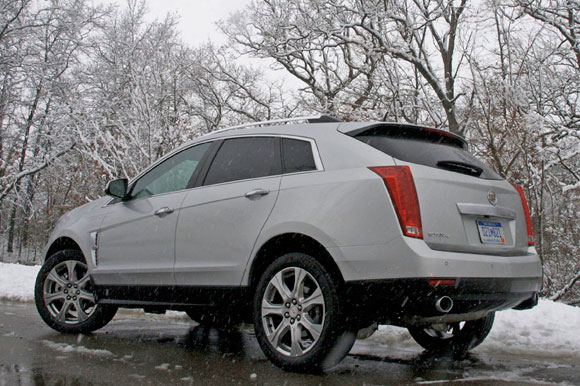
Both SRXs were powered by the new 265 hp 3.0-liter direct injected V6 that's shared with the new Chevrolet Equinox, GMC Terrain, Buick LaCrosse and other upcoming sedans and crossovers. Each SRX also had the new Haldex torque vectoring all-wheel drive system that we sampled last year in the Saab Turbo-X. In fact, the only substantive difference was the suspension trim level: the gold SRX in the photos rolled on standard 18-inch wheels and FE2 suspension, while the silver model had 20-inch rims, the FE3 setup and an adaptive damping system.
For the second SRX, Cadillac decided to split the jack of all trades, master of none first-gen model into two distinct vehicles that should have more appeal to prospective buyers. The Griswold-esque aspects of the old model can be had in the CTS Sport Wagon due to arrive this summer, while the SRX is a pure CUV with a more aggressive stance that looks particularly handsome on the road. Anyone familiar with recent Cadillac offerings will instantly recognize the new SRX's familial resemblence. Those who prefer the high-riding stance of an SUV, but want something that drives more like a car, will feel right at home.
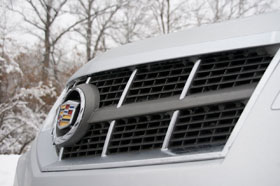
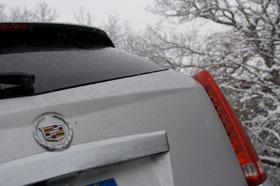
The 2010 model is smaller than before and Cadillac has decided to dispense with the limited utility of a third row and focus on optimizing the space for four (or five, in a pinch) passengers. The new SRX is aimed directly at the heart of the segment leader, the Lexus RX350 and is almost a dead-ringer size-wise. Inside, CTS fans will feel at home with the integrated center stack and pop-up navigation screen. The gauges have a glowing translucent back face and the center of the speedometer features a circular LCD driver information center. On the non-nav equipped models drivers can call OnStar for directions and the turn-by-turn instructions will be displayed at the center of the IP.
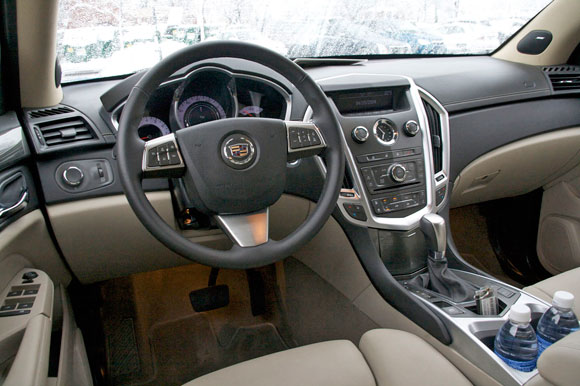
The front seats are comfortable and reasonably supportive, although they feel flatter than the CTS seats with less aggressive side bolstering, and the driver's seat has an optional adjustable thigh support, welcomed by the long-limbed among us. Those relegated to the back have ample room for legs and hats and can also adjust the angle of the seat back. Even in in pre-production form, the SRX was pleasantly quiet with no noticeable wind noise. While cruising, the engine was hushed with none of the injector ticking other DI engines suffer from. Only under hard acceleration does the engine display any signs of aural ferocity, letting the driver know that this CUV can get up and go. The new V6 offers sufficient power to move the 4,360-pound all-wheel drive SRX without ever feeling strained, even with three adult males on board.
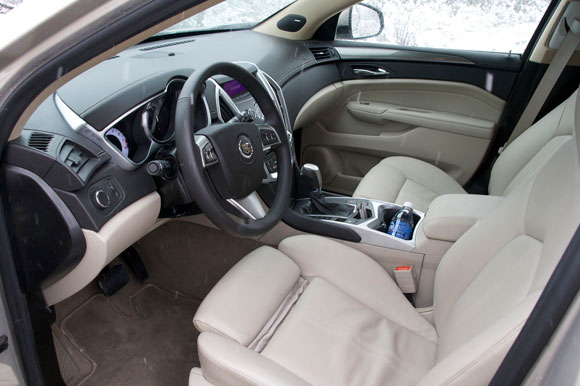
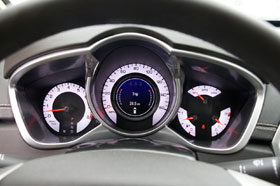
The transverse-mounted engine sends power through the same six-speed automatic transmission used in the larger Lambda crossovers, as well as the 3.6-liter Chevy Malibu. Like most of its contemporaries in the segment, the shift lever can be popped over into a sport gate that enables more enthusiastic throttle response and higher shift points for the transmission. During braking, the transmission down-shifts to enhance engine braking and under hard acceleration, the engine revs to about 6,500 rpm before shifting. Thankfully, even after backing off the throttle, it doesn't immediately up-shift. The transmission will stay in gear, holding higher revs in the event that the driver gets back on the throttle, something you'll appreciate when negotiating a series of curves. The advantage to this strategy is that the transmission doesn't get into a gear-hunting situation, shifting back and forth mid-corner.
This is the transmission that was jointly developed with Ford and can be found in all the large transverse applications from Dearborn including the Flex and MKS. Both companies use the same hardware, but developed their own control software. In normal drive mode, the transmission shifts fairly smoothly, although it's still not quite as polished as Ford's application. With the shift lever in the sport gate, a tap forward or back induces a quick shift up or down, respectively. Only the 2.8-liter turbo will have steering wheel mounted paddles when it launches later this summer.
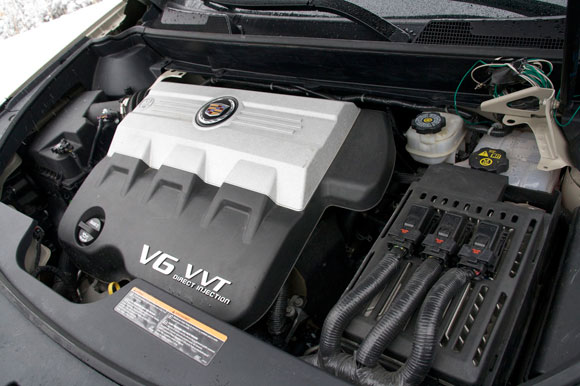
Even with the base suspension setup, the SRX offers an excellent balance of ride and handling. The standard dampers keep body motions in check over broken and uneven pavement. Rough surfaces mid-corner did nothing to unsettle the SRX, with predicable body transitions that allowed the CUV to stay planted through the bends. The adaptive damping system handled the extra unsprung mass of the 20-inch tire/wheel combination well and overall, the ride didn't feel noticeably worse. Cadillac opted for a less sophisticated variable orifice damping system rather than the magnetic ride setup used on the CTS-V. The SRX doesn't need the dynamic range of the MR system since it doesn't have the performance capabilities of the high-powered sedan, not to mention the variable orifice system is less expensive. One other factor weighing against the MR is the fact that it's supplied by Delphi and GM is trying to wean itself off its former parts division as a supplier.
Another dynamic high note for the SRX is the steering, which retains a hydraulic assist system. The engineers couldn't get the feel they wanted from the electronic systems, particularly the column-mounted designs. The SRX has virtually no on-center free play and the effort required to turn the wheel has a nice heft to it from both the fixed rate system on the base suspension or the variable effort installation on the FE3.
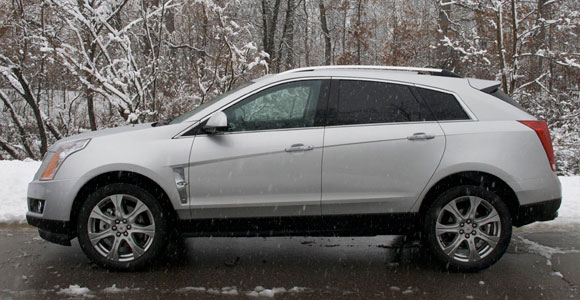
One of the major mechanical selling points of the new CUV platform for the SRX is the inclusion of the Haldex torque vectoring all-wheel drive. Like the Super Handling All Wheel Drive of the Acura MDX or the xDrive system of the BMW X5/X6, this system is tightly integrated with the stability control. When addtional yaw adjustment is needed without slowing down the vehicle, the rear axle can send extra drive torque to one side or the other to help overcome understeer or oversteer. While most modern vehicles have very similar hardware, the key to getting the most out of the system is in the control software and vehicle integration. Here, GM excels, especially compared to vehicles from Brand T. When the stability control/torque vectoring intervenes, it does so in seamless manner that just makes the vehicle go where the driver originally intended without jerking it around or delivering a series of annoying beeps.
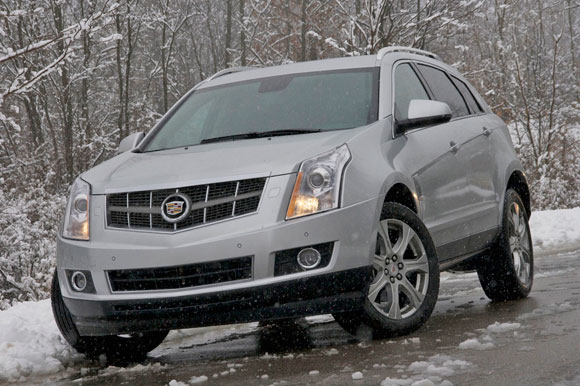
Unfortunately, our time behind the wheel of the SRX was limited to less-than-ideal public roads, but the fresh wet snow and patchy coverage did provide an opportunity to try out the ABS, traction and stability control. All worked as advertised. Accelerating with two wheels in the snow and two on damp pavement proved utterly uneventful, exactly as it should. The calibrations on the vehicles we tested were at the 100% level, meaning this is what will go into the first saleable CUVs when production begins next week. Those vehicles will go into GM's internal fleet for field testing, followed by full production vehicles starting in late May or early June. Between now and then, expect a full First Drive review, where we'll get the chance to explore every aspect of the 2010 Cadillac SRX -- weather permitting.
%Video-411%
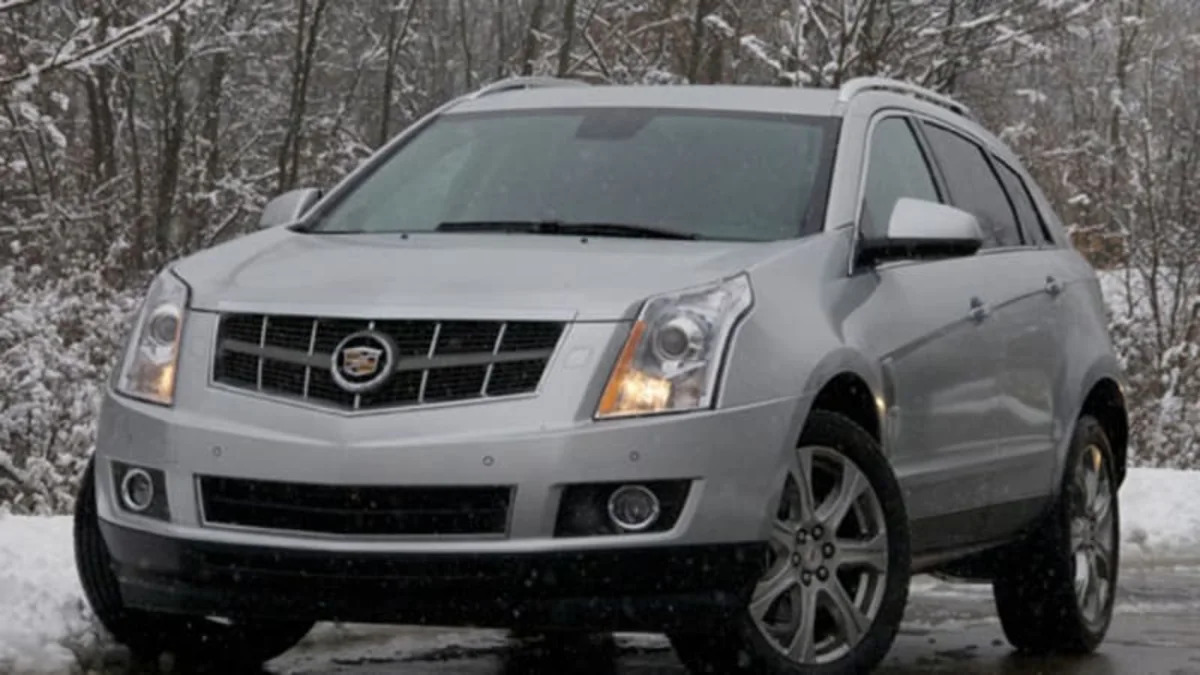
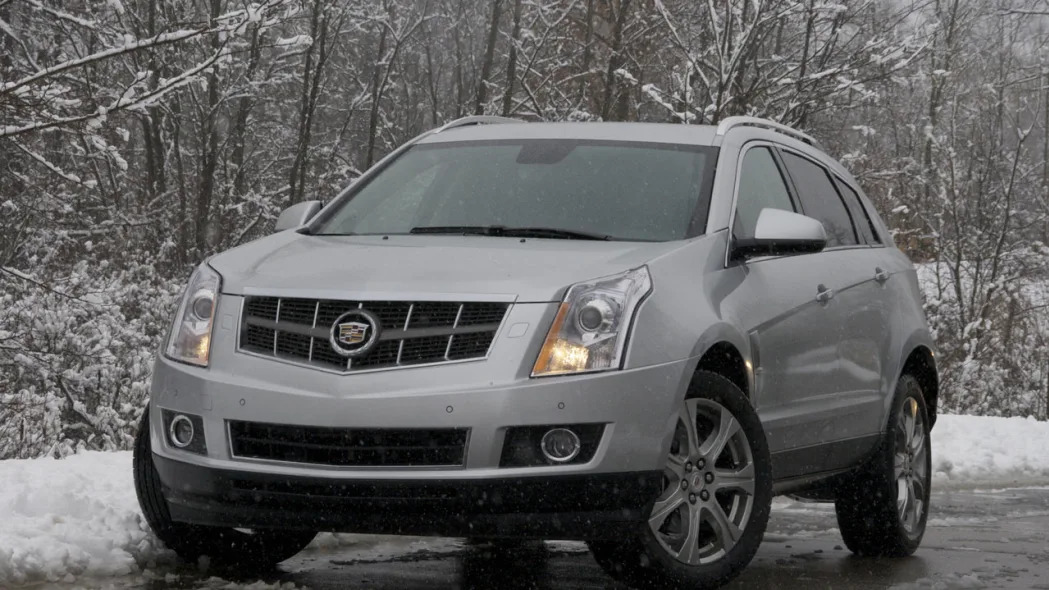

Sign in to post
Please sign in to leave a comment.
Continue